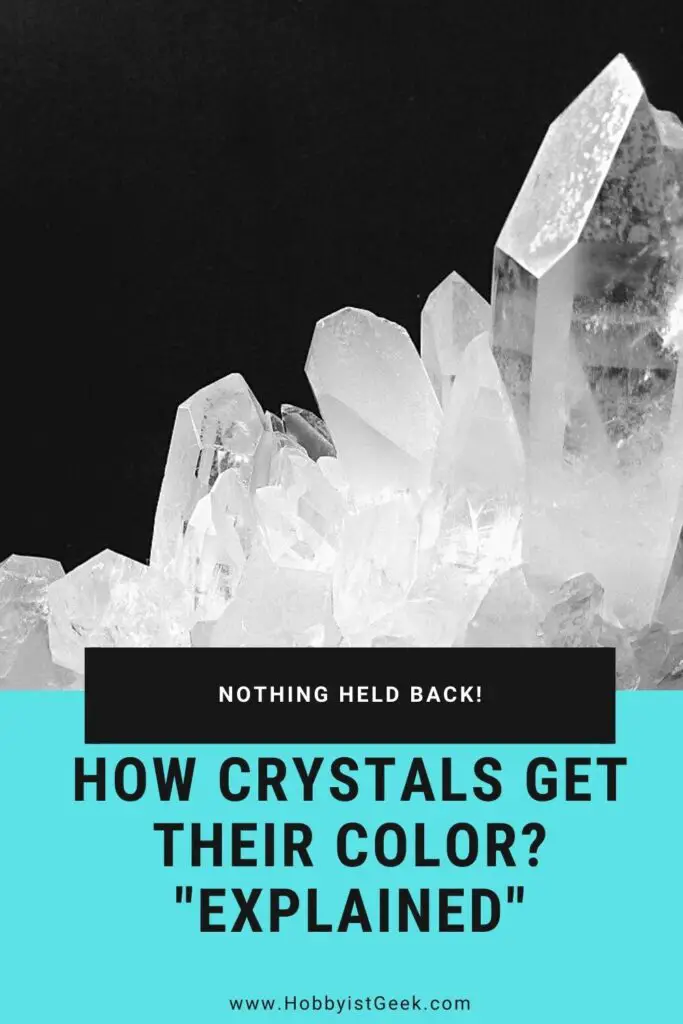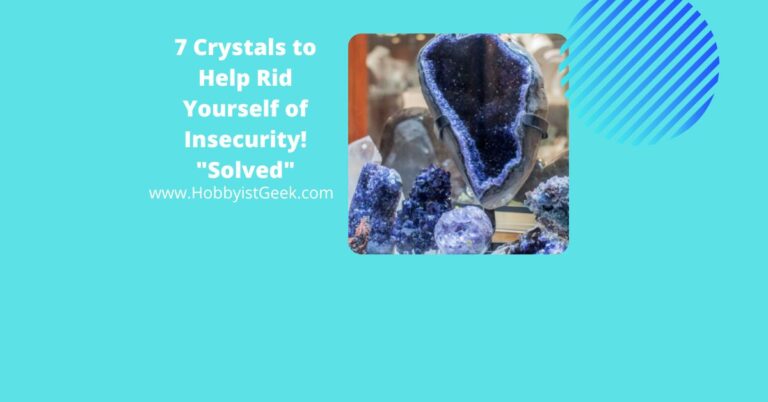How Crystals Get Their Color? “Explained”
How crystals get their color is our topic enjoy.
The color of any crystal is determined by the elements in a mineral and also by the presence of any impurity.
It also depends on the wavelengths of light absorbed and reflected. We can also add color to crystals such as quartz by a method called quench cracking.
Tourmaline is considered the most colorful crystal
The most defining feature of a crystal is its color. Have you ever thought about why emeralds are green, Quartz is colorless and rubies are red? And also why do diamonds come in different colors like white, pink, and yellow?
This article will give you a glimpse into the world of gemstones, you’ll come to know why they have such beautiful colors which we find so captivating!
What Determines The Color Of Crystals Found In Rocks?
The first thing that we observe about rock is its color. Rock occurs in a variety of colors, hues, and saturation.
The colors of the rock are generally determined by the minerals that make up the rock. The color of minerals is due to the different elements they are composed of.
For example, red-colored rock has a good amount of iron in its composition, and on the other hand, light-colored rocks such as Quartz or calcite are made up of Silicon and Aluminium.
Some other factors responsible for the colors of the rock are the presence of minor chemical impurities, the physical defects in the crystal structure, the rock-forming environment, and the amount of oxygen during deposition.
What causes colors in gemstones?
The color of any object is mainly determined by the wavelength of light it refracts. The daylight is white and it processes all the colors present in a spectrum.
Whenever light strikes an object some of it is absorbed and the rest is refracted. The refracted light is the perceived color of the object.
The same is the case with gemstones each mineral absorbs and reflects some light and then the wavelength of the light refracted determines the color of a gemstone.
If the gemstone is formed of some impurities then different impurities can present different colors.
For instance, beryl is colorless but if there is the presence of some chromium in beryl then it appears green, with magnesium it appears pink, and with iron, the appearance is light blue.

What Are The 8 colors of minerals?
The identification or recognition of colors in minerals can be traced back to our prehistoric ancestors who used charcoal and iron oxides for cave paintings and these paintings still retain their original intensity.
So minerals can be very colorful most of the time and you can use the color for identifying a particular mineral.
Idiochromatic Minerals are considered self-colored just because of their composition. The color of these minerals is a constant and predictable component of the mineral.
Examples of this one include blue azurite, red cinnabar, and green malachite
Allochromatic are other colored minerals just because they consist of trace impurities in their composition or they might contain defects in this structure.
So in this case the color of the metal is somewhat variable and can be an unpredictable property of a particular mineral. Examples included in this case are blue in amazonite, yellow in heliodor, and rose in rose quartz.
Pseudo chromatic minerals are also known as false-colored minerals due to tricks in light diffraction. In this case, the color is variable but is a unique property of the mineral.
Examples, in this case, can be the colors produced by precious opal and Shiller reflections of labradorite
Can You Use Crystals Together? “With Examples”
What Are The Effect of colors on our minds?
Colors can be used to signal action and influence moods. For example, red is known as a warm color and it awakens emotions such as warmth, anger, comfort, and hostility.
Colors similar to blue are considered cool colors and they often symbolize calmness, but they can also depict feelings of sadness and indifference. Some ancient Chinese and Egyptian cultures used colors to heal and they called it chromotherapy.
This is also used nowadays to treat many problems. In this treatment red color is used for stimulating the body and mind for improving circulation.
Yellow color is considered to stimulate nerves and purify the blood. Orange color is used to increase energy levels. Blue and Indigo colors are used to treat illness and alleviate skin problems respectively.
How Do You Add Color to crystals?
The crystals of minerals are well known throughout the world for their clarity and sparkle.
But if anyone wants to give them a new color combination and new hues then crystals can be color-treated.
The most common example is Quartz which is the cheapest crystal for color treatment, and the main reason behind this is the neutral color and clarity. The best method for or dying quartz is called quench cracking and this method allows the non-porous Quartz crystal to absorb dyes.
The dyeing process is very easy. Just fill the bucket with cold water put the dye in it and stir it continuously until the dye fully dissolves.
In the case of crystals you need a higher concentration of dye than you would need for dyeing cloth, so use double quantity of dye in the solution.
Put on your gloves and goggles and turn on the butane torch. Now hold the Quartz crystal with metal tongs and then heat it by using a butane torch for about a minute.
Drop the Crystal into a bucket and it will crackle and absorb the dye into the cracks, it will change its general color
What Is The most colorful crystal?
Tourmaline Is a very rare crystal and is very famous for its massive range of colors and shades.
The depth of colors in this crystal rivals that of emeralds, rubies, and sapphires.
Between 1898 and 1914 California was considered the largest producer of tourmaline in the world and the shades included blue and yellow.
Final Thoughts On… How Crystals Get Their Color? “Explained”
Every crystal is composed of minerals having unique composition.
This composition determines the color of the mineral. The diversity in colors of crystals allows us to use them for many different purposes
If you enjoyed How Crystals Get Their Color? “Explained” you will love How To Use Crystals For Beginners? All You Need to Know

Frequently Asked Questions
Do crystals change colors?
s, crystals change their colors. Sunlight can lead to color changes in crystals and stones kept in an open environment can also change colors if the hardness on the MOHS scale is less than 7.
What is the most expensive gemstone?
With a huge price tag of 83 million dollars, Pink star diamond is the most expensive gemstone.
What are the three most popular gemstones for jewelry?
Tanzanite, Black opal, and Red Beryl are the three most popular gemstones for jewelry



Sources
https:://fossilandcrystalshop.com/blog/how-crystals-get-colour/
https:://www.leohamel.com/blog/index.php/2017/01/gemstones-colors-buy-sell-jewelry-san-diego/
https://www.gemselect.com/other-info/about-gemstone-color.php
http://webmineral.com/help/Color.shtml#.YZqbWIBRVPw
https://www.verywellmind.com/color-psychology-2795824
- Jewelry Making Ideas: Seasonal Crystal Trends That Command Premium Prices - May 31, 2025
- Evil Eye Hand: Unveiling the Mystical Origins and Meanings - February 2, 2024
- Amegreen Amethyst Meaning: Discover the Hidden Magic! - February 2, 2024







